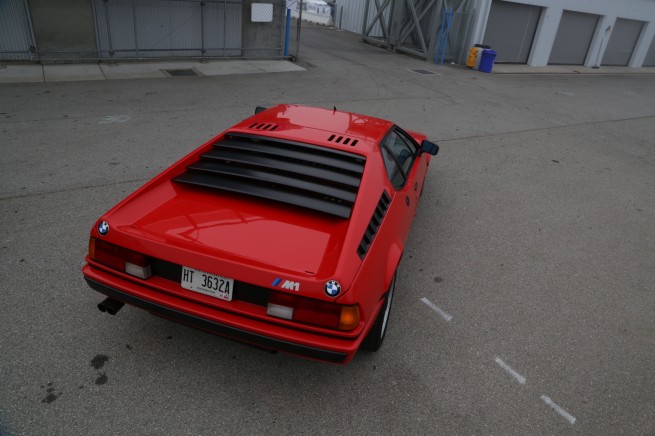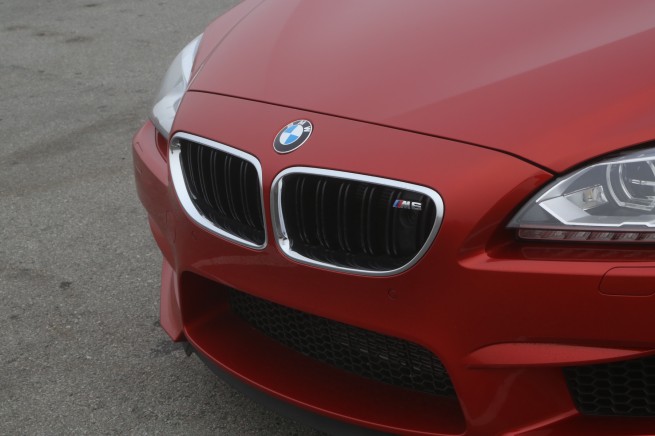My girlfriend recently asked me why I love to drive. She asked me why I smother cars with my love and affection. Then she asked the big one; the question that gets car enthusiasts excited, car designers sweating, and car salesmen winking: “what is the recipe for a great car?”
As a woman who’s never put foot to pedal (much less pedal to metal) or hand to wheel, I can appreciate why she would find my automotive affection perplexing. Imagine trying to explain to a vegetarian the magic of beer and wings (or whatever your carnivorous appetite desires).
I tried to explain the recipe for a great car as concisely as I could. I’m paraphrasing, but here’s the foundation.
A great car always starts with a great chassis. The chassis is the metal structure hidden from view. On most cars it includes a frame and supporting members, reference the square metal box of a wagon. The chassis is, in human terms, the skeleton of the car, and it’s what everything else is attached to directly or indirectly.
So why is it important? A poorly designed and constructed chassis will be weak, and it’s likely to be overweight. The chassis is inextricably central to the driving experience. Your driver’s seat is connected directly to the floor, which in most modern cars is a stressed member of the chassis. As you drive along the road or track, the wheels are in constant motion, and they transfer energy from their motion up into the suspension. The suspension then passes a measure of this motion into the chassis, and the chassis, in turn, passes the movement into your seat, which, finally, bumps, vibrates and motions a message from the tires into your bottom and back.
A weak chassis will flex like a leaf spring when driven hard into corners and over bumps. Not only will it lose part of its ‘message’ from the tires, but it will fail to hold the suspension entirely accountable – the chassis itself absorbing some of the motion sent upwards from the wheels. This means that the suspension will work less effectively, compromising control. It’s a lose-lose situation, and the entire driving experience suffers as a result.
The feel of a stiff, rigid chassis is difficult to articulate – but pronounced nonetheless from behind the wheel. You really can feel the difference, and it is manifest in an overall feeling of solidity and precision. Without question, the chassis is the most important ingredient in a car – the foundation of the driving experience.
We touched on the suspension already, and of course, it’s pivotal in its role of car control. There are many different suspension designs out there, some of them are exquisite gems of technological mastery, others are utter failures above 10 kph. A great suspension will keep the tires mated to the road surface under hard cornering, braking, acceleration, or any combination thereof, while quelling body movements, allowing the car to respond to driver inputs as intended. The suspension parallels the strong legs of an athlete.
Interestingly enough, McLaren have just smashed the glass ceiling of suspension design with their incredible sway bar-less design in the MP4-C12. Using a hydraulic anti-roll system instead of a conventional metal bar, the system can be continuously adjusted for “stiffness” and can adapt throughout a single corner. When driving in a straight line, the hydraulic system does not transfer wheel movements into the chassis as a conventional sway bar does, so the ride is incredibly compliant. Cool stuff. At the other end of the spectrum, we have the Ford Mustang’s antiquated solid rear axle, stolen directly off a horse and buggy from 1904. Somehow, despite its humble basic design, Ford have made it work. As sampled on the Boss 302 Laguna Seca edition, the Mustang out-laps a current model BMW M3. I recently had the pleasure of driving the 302 Laguna Seca on track and I had an absolute blast – I couldn’t believe how well sorted the rear buggy suspension really is. To wrestle the lap record away from an M3 on any track is no small feat – to beat out the M3 at Laguna Seca is an incredible accomplishment. The point to take away from this is clear: the suspension is critical to the driving experience, and what matters more than the specific technology used is how it works in harmony with the car.
The way the tires meet the tarmac is dictated by the suspension – measurements such as camber, toe and caster describe the alignment of the wheels in relation to the road surface, and the suspension is responsible for this alignment. The suspension set up, along with the overall balance of the chassis and subsequent weight distribution across the wheels will dictate the handling of the car. This is where the magic happens. A stiff, lightweight, balanced chassis with a well tuned suspension will send you blissfully through corners with neutral, playful handling.
If the chassis is the backbone of your athlete and the suspension represents his legs, the engine constitutes his heart. We all value a strong heart. There is something innately romantic about an engine; the parts moving in synchronous harmony, the explosions of fire, the spinning shafts, the sound. The soul of each car is bound up in its engine, and when it finally expires, the chassis is laid to rest. A powerful, finely tuned engine is a thing of beauty – its headers bulging out from beside the block, the head proudly displayed in full view. Even when sleeping, an engine can inspire awe. I recall the first time I beheld BMW’s 6.1 litre V12 mounted amid-ships in the McLaren F1. My knees wobbled at the sight of it. Just knowing what its 618 horsepower was capable of made me feel as though in the company of a great athlete, indeed.
Ignite the engine and you are well on your way to falling in love if behind the wheel of the right machine. The car begins to move in direct correlation with your right foot; the mechanical symphony playing louder and louder to crescendo as you press on deeper into the rev range. Accompanying pulsations and vibrations make their way into the cabin. And of course, the thrust felt against the back of your seat strains your neck in every gear. Your heart beats faster in unison with the revving heart of your machine. It’s all very romantic and intimate when piloting exotic metal – and the engine is invariably the crown-jewel of a sports car, the most exotic expression of advanced technologies and materials at play.
If you shouldn’t judge a book by its cover, then you ought not judge a car by its skin. Too often I travel the auto show circuit and witness the public and even a large percentage of the auto press writing-off or praising a car based solely on its shape. I challenge you to start analyzing cars based upon what lies beneath. When you look at a car, try to envision the chassis beneath. Learn of its weight, its structure, materials, and weight distribution. Peak your head beside a wheel, and take a look at the suspension. Pop the hood and study its engine: go past the numbers and look for exotic materials used, advanced technologies, weight, cylinder layout, and the position of the engine in relation to the chassis. Does the majority of its weight rest fore or aft of the front axles? Much can be learnt about the driving experience before turning a wheel.
Then, when you have the chance, turn on the ignition. Let the engine settle to a shallow hum. Be cognizant of the above considerations, and paint a picture in your mind of how you think the car might handle and perform. Now, hopefully in the open freedom of a race track or quiet back road, open it up. Explore the limits of the technology held within. Does the chassis flex and wallow through corners and over crests, or is it rigid and unflappable. Does the suspension keep the tires well mated to the road surface? Is the resulting interplay between chassis and suspension playful and exciting, or does it penalize you for exploring the limits of grip with painful understeer? How is the engine? Does it breathe freely, releasing power as you release endorphins?
As you press on, a clear picture will be painted, depicting more than the car’s performance. You’ll begin to know its soul. You’ll feel its chassis through your seat. Its engine will tickle your ears while your neck tires from constant G force.
Few cars are capable of checking every box. But those that do comprise more than the sum of their parts. They remind you of the reasons you love to drive.
[Photos Credit: Shawn Molnar]












































































